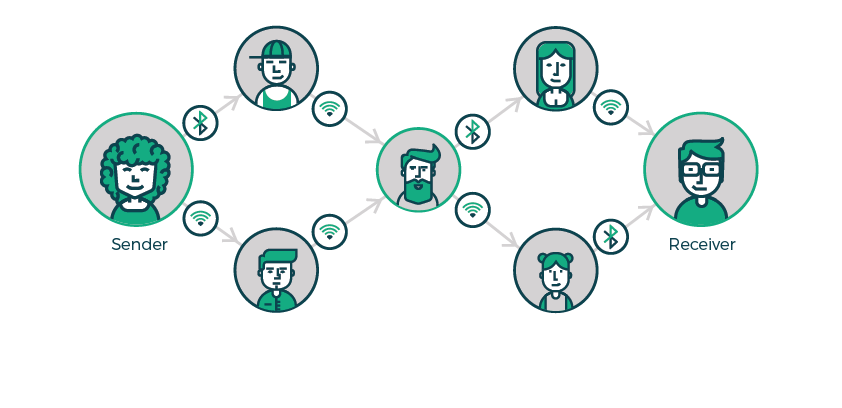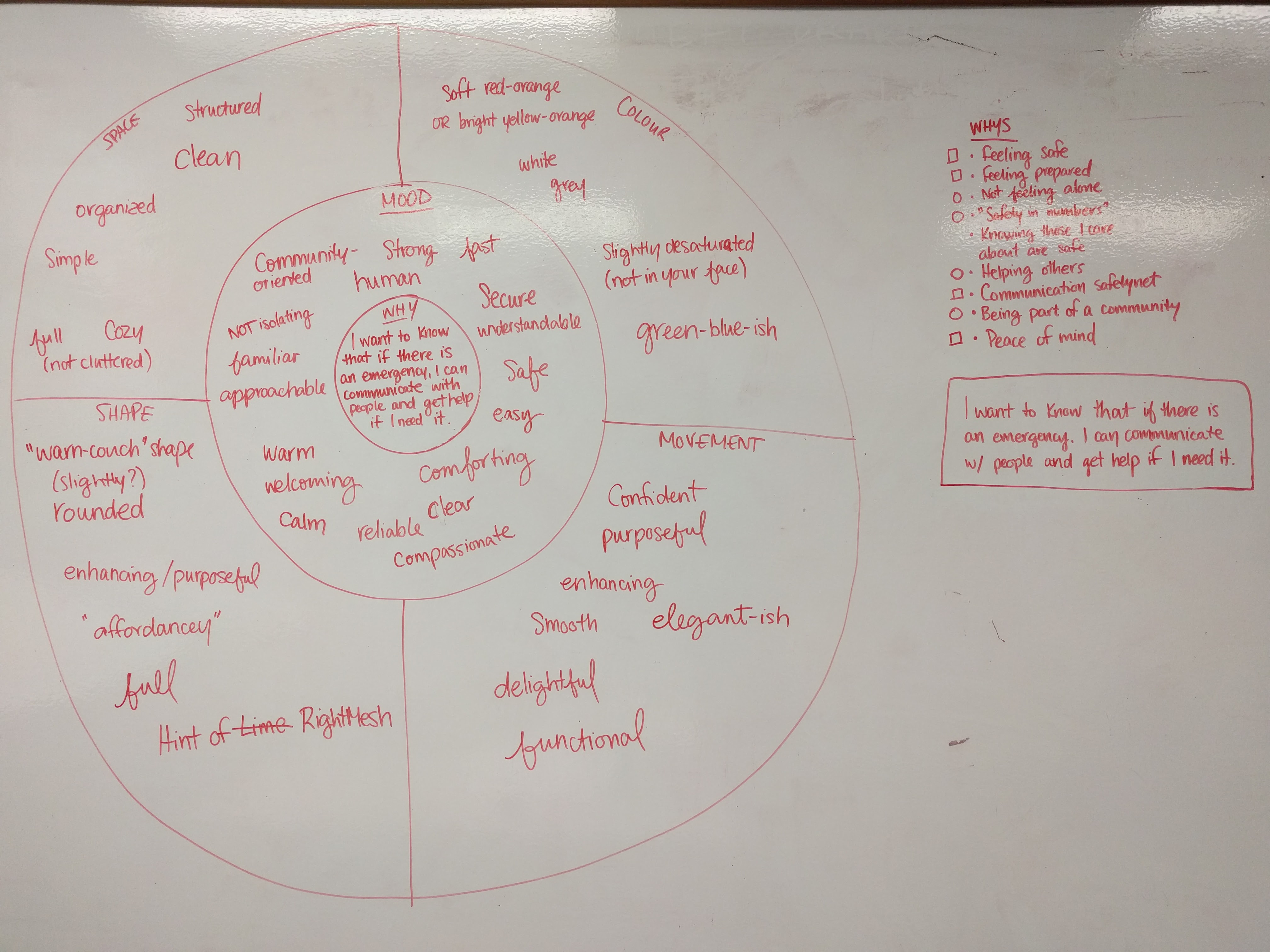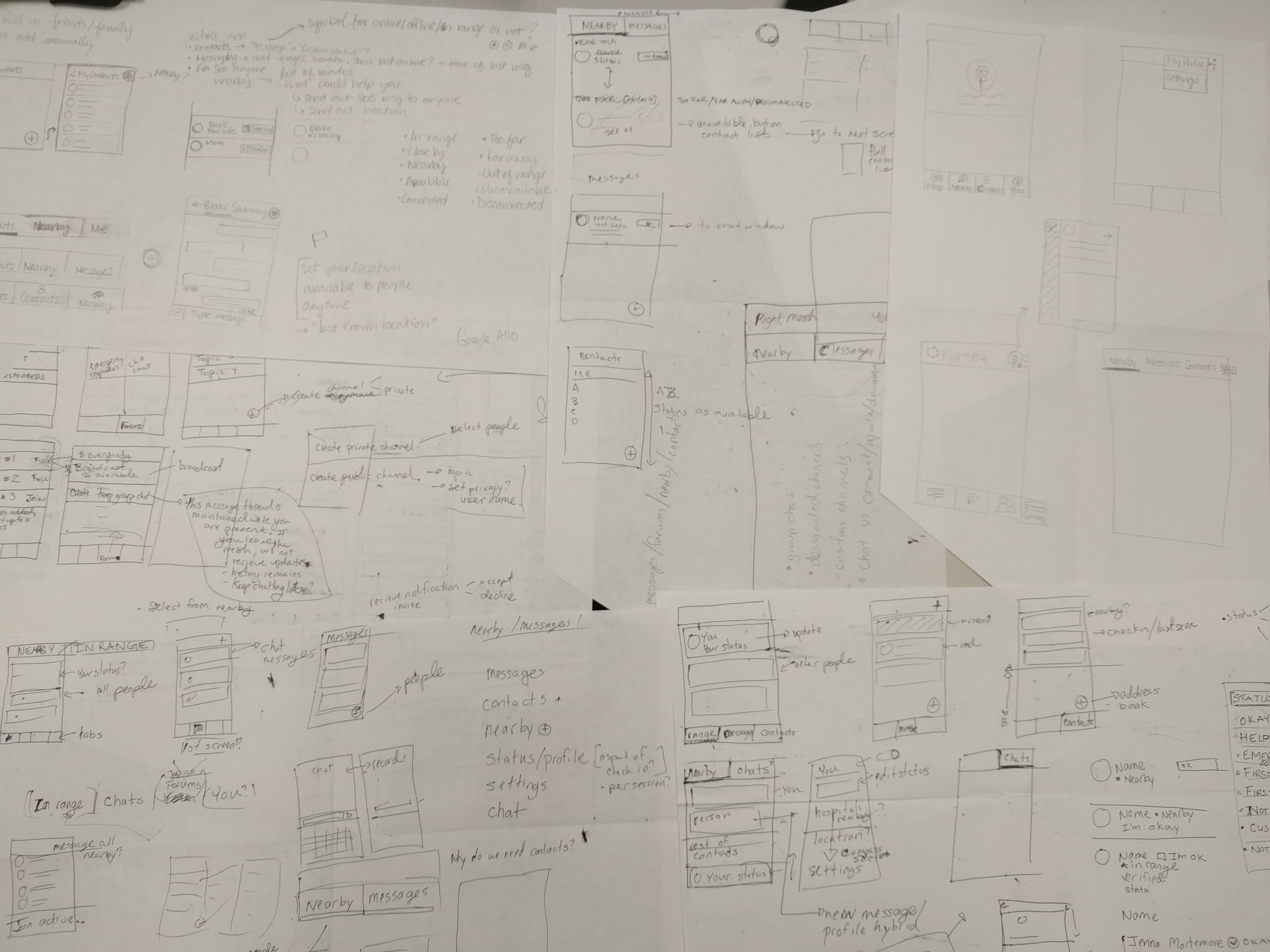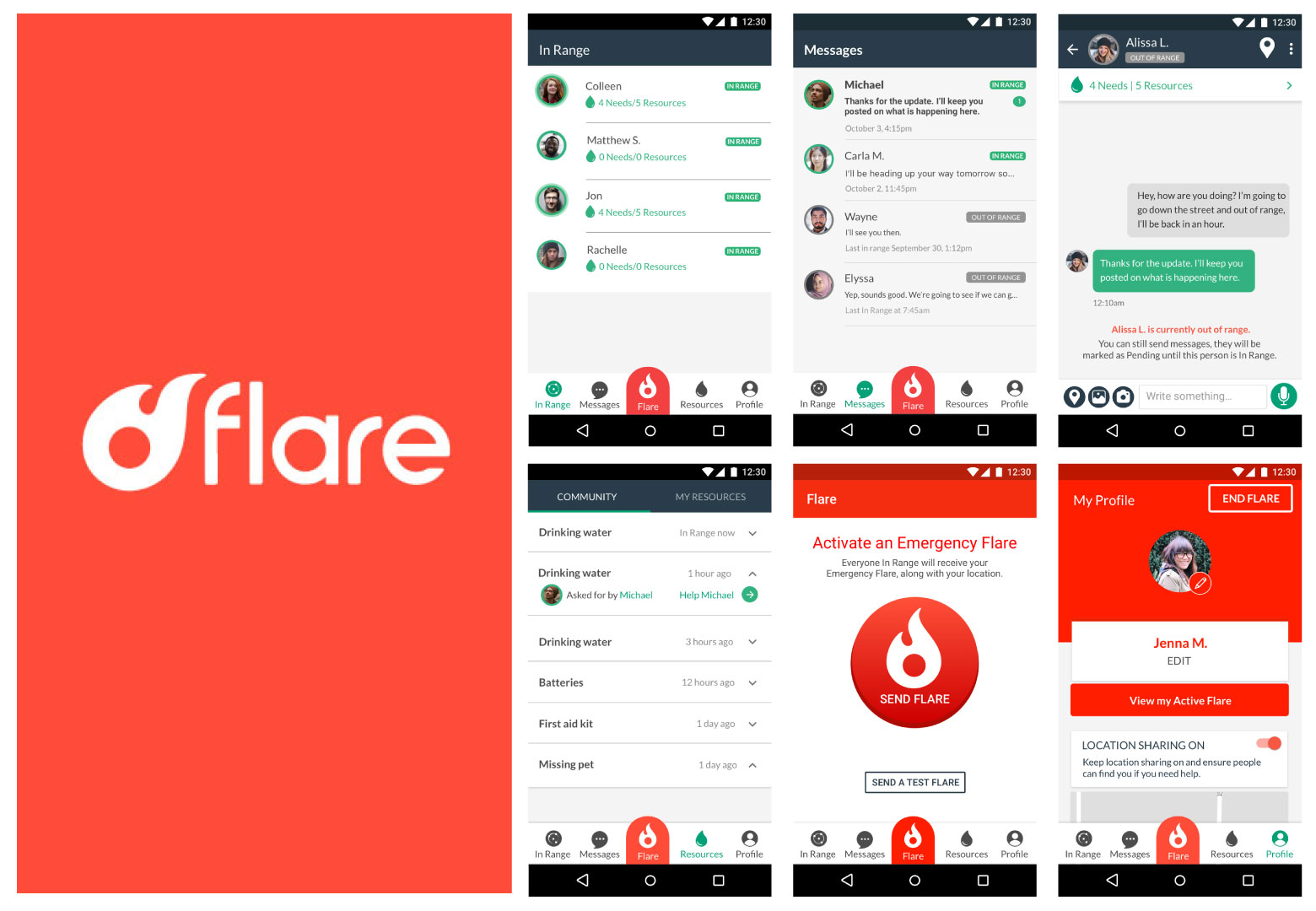Flare App
Offline emergency communication using RightMesh
Flare is an app that uses RightMesh technology, a mobile mesh networking software that uses blockchain technology and allows Android devices to connect via Bluetooth and Wifi without the need for mobile infrastructure or internet connectivity. Sending messages via Flare uses RightMesh and uses other RightMesh users to collect and send messages to its final receiver. This is how RightMesh works:

The app was designed by myself and another Product Designer on the RightMesh team. We began the project in late 2017, when there had been a huge earthquake in Mexico, when the US was still reeling from damage of multiple hurricanes, and there were huge wildfires in Northern BC. Using RightMesh, we felt that an offline communication app could really help people in those situations.
Our Process
Research and Insights
We began the project with a phase of user research, which included learning as much as we could about natural disaster, conducting interviews of experts in emergency response, a competitive analysis, and we even attended an emergency preparedness workshop put on by the City of Coquitlam. We aimed to learn as much as we could about the field in order to understand what would be the most important features an emergency communication app could have.
We knew going into this project that prior to Hurricane Irma hit land, a “walkie-talkie” app called Zello had millions of downloads because it claimed that it allowed communication even if cell towers were down.
We learned that it is common in the event of an emergency that people really come together to help each other. A family that is trapped inside their house during a flood needs to be able to contact anyone who can potentially help them. A family who has just been through an earthquake needs to be able to reach out to their other family or friends to let them know they are safe. This has been shown on Facebook and other social media for years.
From our research, we found that there were a few direct competitors which used a variation of RightMesh technology, some physical hardware products that allowed hikers to check in or send messages, and several other products for sending help “beacons”.
Competitors
- FireChat – A direct competitor that uses a mobile mesh network like RightMesh
- Zello – A walkie-talkie app that allows quick broadcasting to big groups, but doesn’t use an offline network
- Bridgefy – Another direct competitor, which allows offline communication
- Helpers (formerly Musketeer) – Using traditional connectivity, Helpers allows a user to broadcast a “beacon” for help to everyone in their vicinity, potentially getting help fast
- goTenna – A physical hardware that a user can attach to their keychain or backpack, to allow a user, such as a lost hiker, to broadcast a “beacon” for help of their location.
Concept, features & prototype
At this stage, we began to flesh out what features should be prioritized in the Flare app, and what brand the app should reflect.
We conducted a branding exercise where we defined a concise “Why?” for the app’s existence, defined what mood it should convey based on the Why, and then what physical UI characteristics it should have based on the mood.

App features
From our research, we realized that the first priority for users in an emergency scenario is the need for communication, with loved ones and also with strangers they may need to rely on.
We also learned that people are frighteningly unprepared for emergencies, and that the exchange and sharing of supplies and information are vital to survival.
We wanted Flare to have these features:
- A simple messenger that allows people to get help in an emergency by messaging both strangers or attempt to reach out to loved ones.
- Show In Range and Out of Range users who could be strangers or your own contacts, since RightMesh relies on users being relatively close to one another to effectively work
- The ability to add contacts from your phone
- A Resource sharing feature that allows a user to list Resources they have and Resources they need
- The ability to send a “Flare”, an emergency beacon that shares your location and lets everyone in range that you require immediate help.
We did some UX exercises in order to come up with our first prototype, including a feature prioritization exercise, and a time blocked sketching exercise where we each would have 7 minutes to sketch the same screen in as many layouts as we could.

Branding, final product & development
We designed a high-fidelity prototype, as well as a brand for Flare. The app was developed by our team of software engineers in Bangladesh, where we continued to test the app and RigthMesh feature in order to connect Android phones without using internet or cellular service.

Conclusion
In the end, Flare was developed, but at the time the reliability of RightMesh to allow multiple devices to connect to one another wasn’t ready. And because it would be crucial for such an app to work reliably in an emergency situation, we decided to table the app until the technology itself was ready.
Our work on Flare inspired a simplified messenger app called MeshIM, which we designed specifically to enable with RightMesh, as well.
The research for Flare was a really beneficial launching point into what would become a new research project called RightLabs, which I have written about in another Case Study. We spent months researching potential RightMesh use cases, speaking with experts from around the world in all kinds of industries, including emergency response, search and rescue, but also in education, refugee camps, government censorship, mobile money, gender gaps in developing countries, and remote living in Canada, to name a few.